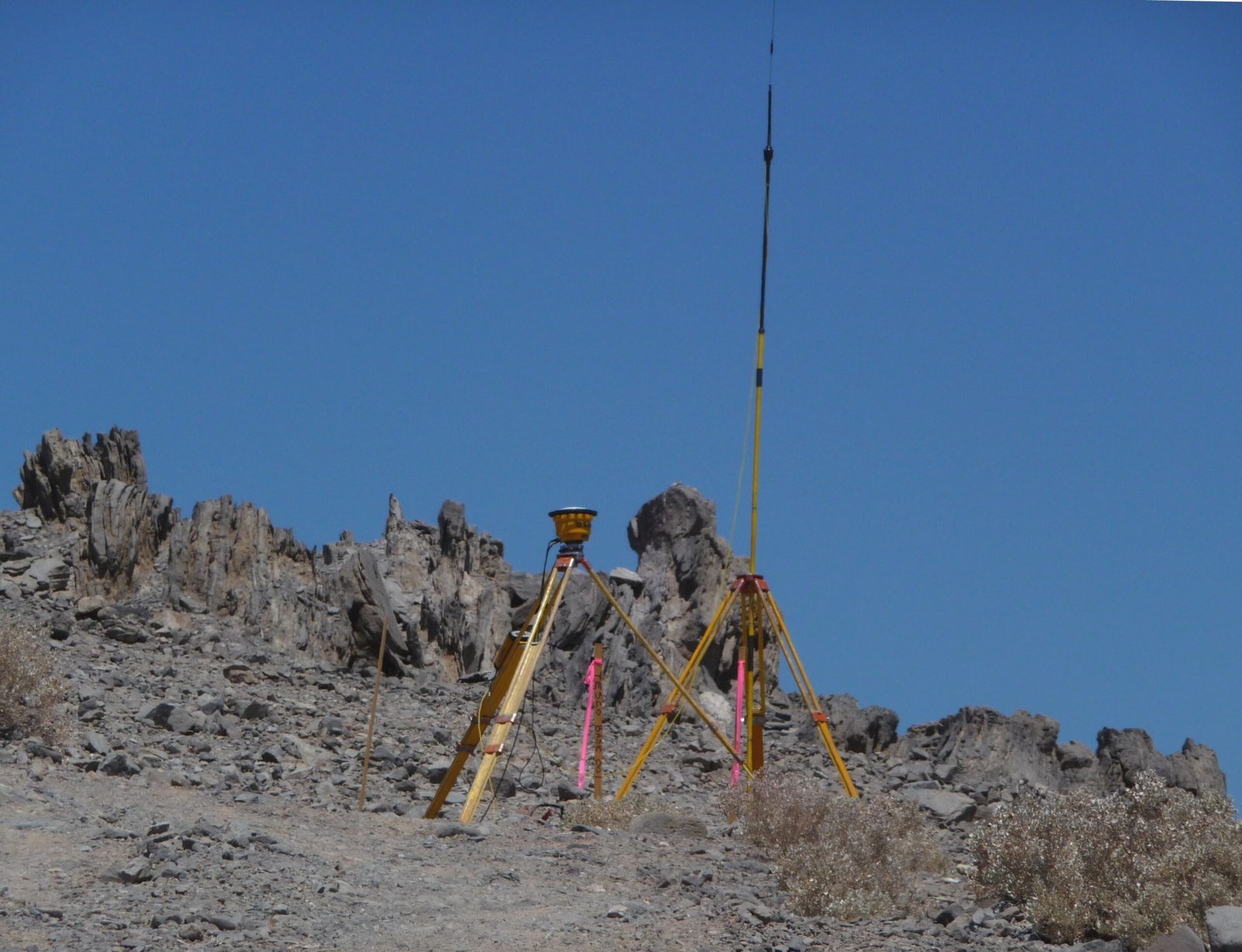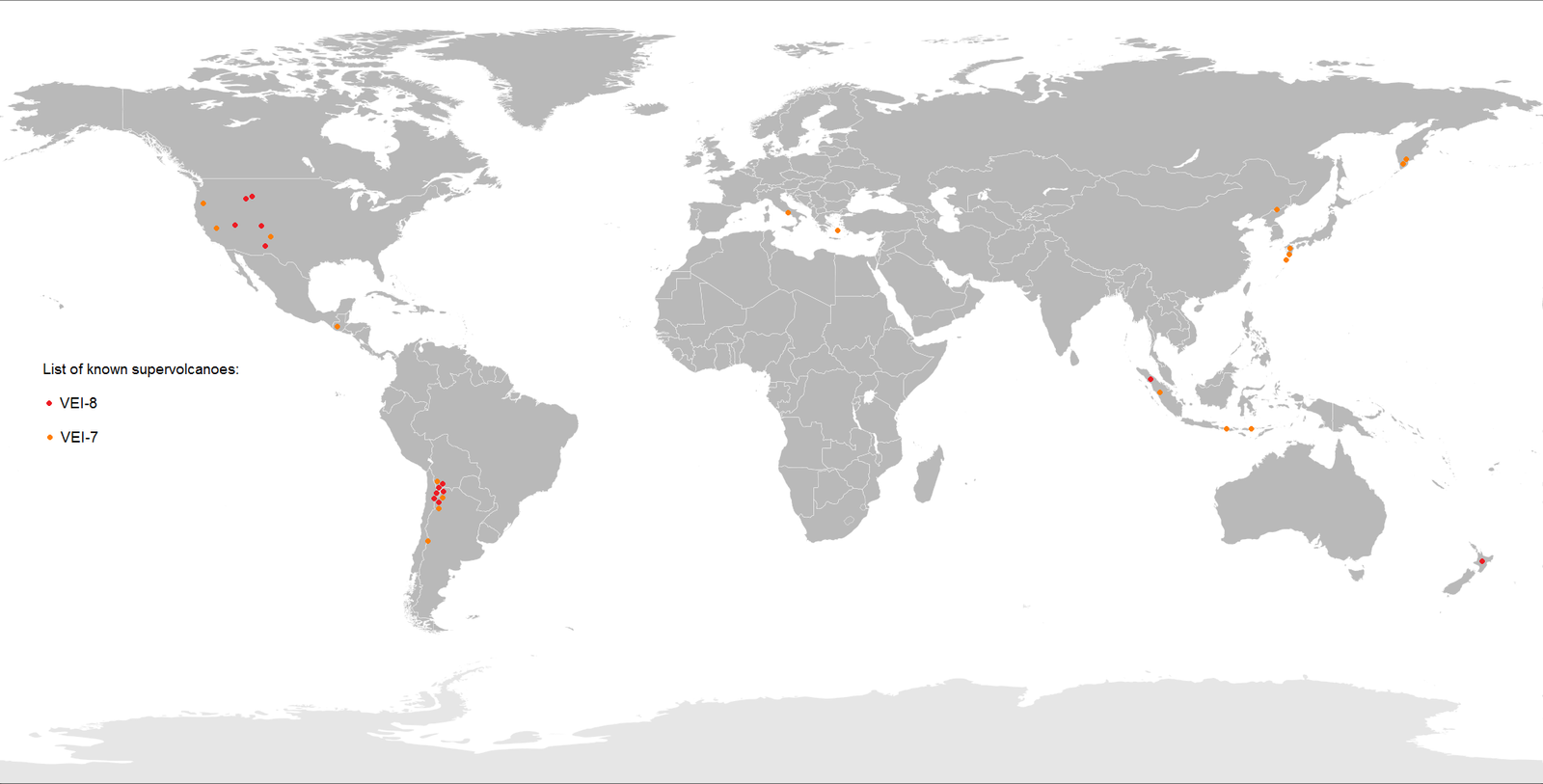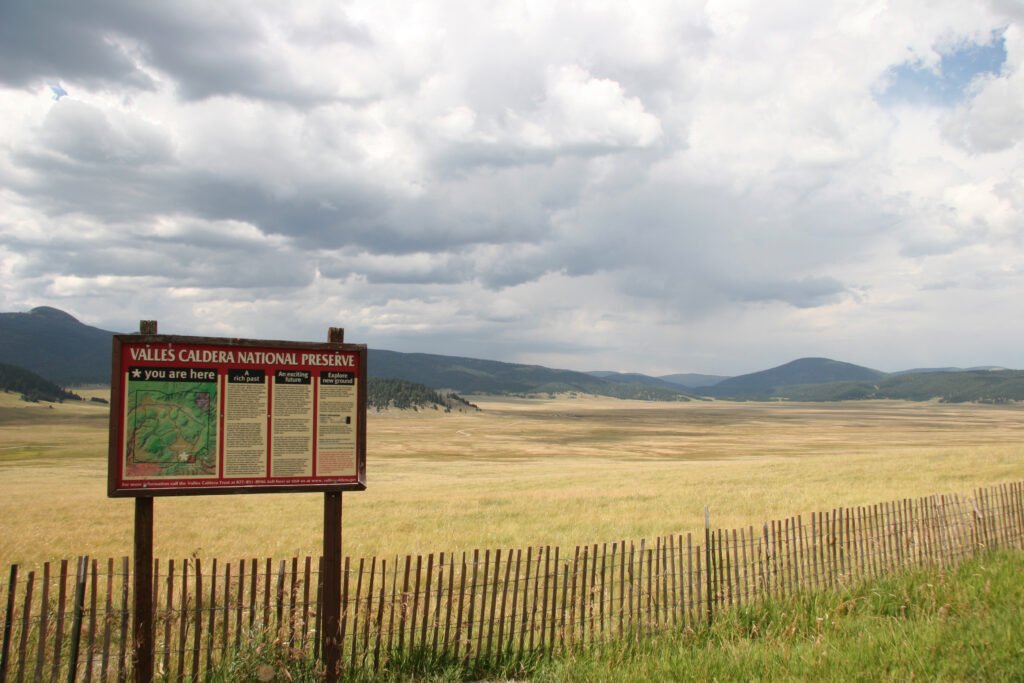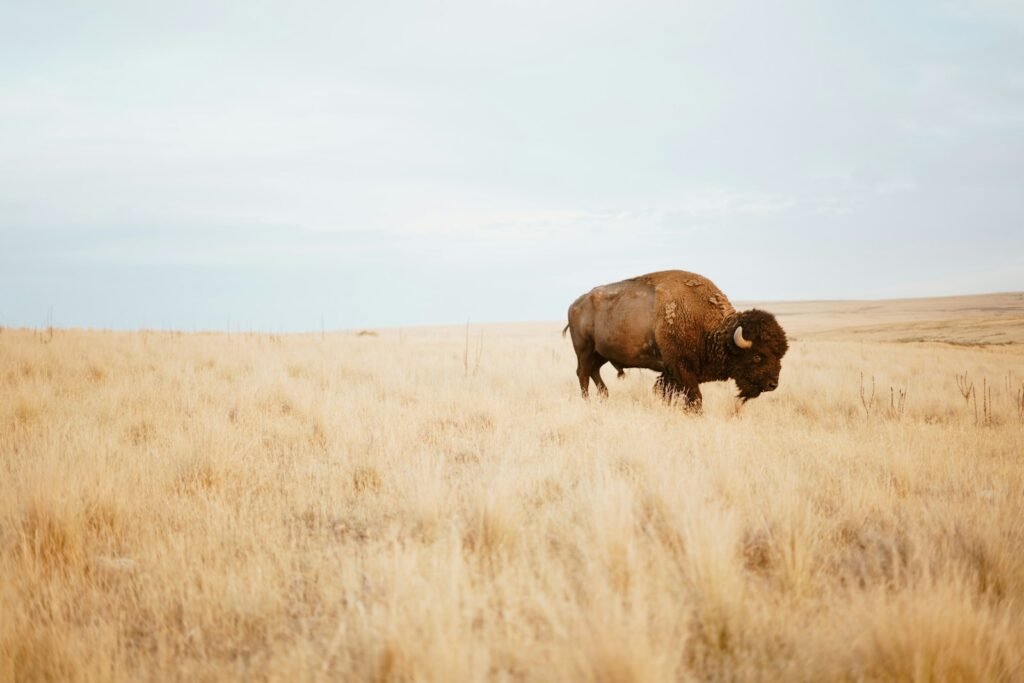Deep in the heart of New Mexico, where ancient forests meet volcanic landscapes, lies one of North America’s most powerful sleeping giants. The Valles Caldera stretches across 89,000 acres of the Jemez Mountains, its peaceful meadows and pristine lakes hiding a violent past that could reshape our understanding of geological catastrophe. This isn’t just another pretty national preserve – it’s a supervolcano that has already erupted twice with enough force to alter global climate patterns.
What Makes the Valles Caldera a True Supervolcano

The term “supervolcano” gets thrown around loosely, but the Valles Caldera earns this terrifying designation through sheer destructive potential. Scientists classify any volcanic system capable of producing eruptions exceeding 1,000 cubic kilometers of material as a supervolcano, and this New Mexican giant has already proven its credentials twice over.
The caldera’s massive 12-mile diameter circular depression tells the story of its explosive past. When supervolcanoes erupt, they don’t just spew lava – they collapse inward, creating these enormous bowl-shaped depressions called calderas. The Valles Caldera formed during the most recent major eruption 1.25 million years ago, when volcanic material shot 25 miles into the atmosphere.
What sets supervolcanoes apart from regular volcanoes is their underground magma chambers. The Valles Caldera sits atop a magma reservoir that’s roughly 50 miles wide and extends deep into the Earth’s mantle. This underground furnace has been quietly brewing for over a million years, accumulating the raw materials for future eruptions.
The Catastrophic Eruption History That Changed Everything

The Valles Caldera has unleashed two world-changing eruptions that make Mount St. Helens look like a firecracker. The first major blast occurred 1.6 million years ago, known as the Otowi eruption, which ejected an estimated 600 cubic kilometers of volcanic material across the southwestern United States. Ash from this eruption has been found as far away as Iowa and Nebraska.
The second eruption, called the Tshirege eruption, happened 1.25 million years ago and was even more devastating. This explosion launched approximately 500 cubic kilometers of material into the atmosphere, creating the current caldera structure we see today. The volcanic debris, called the Bandelier Tuff, still forms the canyon walls and mesas throughout the region.
Both eruptions were thousands of times more powerful than the 1980 Mount St. Helens eruption. The ash clouds would have blocked sunlight for months, triggering volcanic winters that affected global temperatures and weather patterns. Ancient ecosystems across North America were completely transformed, with some species driven to extinction by the sudden climate changes.
Hidden Beneath the Surface: The Massive Magma Chamber

Scientists have used seismic imaging to peer beneath the Valles Caldera, revealing a complex underground world that’s both fascinating and terrifying. The primary magma chamber sits roughly 5 to 10 miles below the surface, containing an estimated 15,000 cubic kilometers of molten and semi-molten rock. This underground reservoir is larger than Lake Superior and significantly hotter than the surface of Venus.
The magma chamber isn’t just a simple pool of molten rock – it’s a dynamic system with multiple interconnected chambers at different depths. Recent research suggests there are at least three distinct magma bodies beneath the caldera, each with different compositions and temperatures. The deepest chamber extends down to about 50 miles, connecting directly to the Earth’s mantle.
What makes this system particularly dangerous is the high silica content of the magma. High-silica magma is extremely viscous and tends to trap gases, creating enormous pressure buildups. When this type of magma finally erupts, it does so explosively, launching material high into the atmosphere rather than flowing gently like Hawaiian lava.
Current Volcanic Activity and Warning Signs

The Valles Caldera isn’t completely dormant – it’s showing subtle signs of ongoing volcanic activity that keep scientists on alert. The most obvious evidence is the presence of natural hot springs scattered throughout the caldera, some reaching temperatures of 160°F. These thermal features indicate that magma is still actively heating groundwater deep below the surface.
Seismic monitoring stations around the caldera detect hundreds of small earthquakes each year, most too small to be felt by humans. These micro-earthquakes suggest that magma is still moving and shifting underground, potentially creating new pathways to the surface. The earthquake patterns have remained relatively stable over the past few decades, but any significant changes could signal increasing volcanic unrest.
Ground deformation is another key indicator scientists watch closely. Satellite measurements show that parts of the caldera floor have been slowly rising and falling over the years, suggesting magma movement beneath the surface. While these changes are measured in millimeters, they provide crucial insights into the pressures building underground.
The Yellowstone Connection: A Volcanic Hotspot Trail

The Valles Caldera’s story is intimately connected to Yellowstone’s supervolcano through a geological phenomenon that sounds like science fiction but is absolutely real. Both volcanic systems are part of a “hotspot track” created by the movement of the North American tectonic plate over a stationary mantle plume deep within the Earth. This hotspot has been punching holes through the continent for millions of years, creating a chain of volcanic activity.
The Yellowstone hotspot started its journey in what is now Nevada and Idaho about 17 million years ago, gradually moving northeast as the continent drifted overhead. The Valles Caldera represents one of the earlier stops on this volcanic journey, showing what Yellowstone might look like millions of years from now. Both systems share similar magma compositions and eruption styles, making them geological siblings.
This connection helps scientists understand the long-term behavior of supervolcanoes. The hotspot track shows that these systems can remain active for millions of years, with periods of intense activity followed by long quiet phases. The Valles Caldera’s current quiet period doesn’t mean it’s finished – it might just be recharging for the next cycle.
Monitoring Technology That Keeps Scientists Alert

Modern volcano monitoring at the Valles Caldera reads like a high-tech thriller, with scientists using everything from satellites to underground sensors to track the sleeping giant’s vital signs. The United States Geological Survey operates a network of seismometers that can detect earthquakes smaller than magnitude 1.0, providing real-time data on underground activity. These instruments are so sensitive they can pick up the vibrations from a person walking nearby.
GPS stations positioned around the caldera measure ground movement with millimeter precision, tracking any bulging or sinking that might indicate magma movement. Satellite radar interferometry adds another layer of monitoring, creating detailed maps of ground deformation across the entire caldera. These space-based measurements can detect changes as small as a few millimeters over areas spanning hundreds of square miles.
Gas monitoring stations analyze the composition of gases escaping from hot springs and fumaroles, looking for changes that might signal increased volcanic activity. Rising levels of carbon dioxide, sulfur dioxide, or helium isotopes could indicate fresh magma rising from depth. Scientists also monitor the temperature and chemistry of the caldera’s hot springs, as changes in these thermal features often precede volcanic eruptions.
Magnetometer surveys track changes in the magnetic field caused by underground temperature variations, while gravity measurements can detect the movement of dense magma beneath the surface. This multi-instrument approach creates a comprehensive picture of the volcanic system’s behavior, allowing scientists to spot potential warning signs months or even years before an eruption.
What Would Happen If It Erupted Tomorrow

A modern eruption of the Valles Caldera would be a catastrophe of unprecedented proportions, affecting not just New Mexico but the entire planet. The initial explosion would likely be heard across multiple states, creating a massive ash cloud that would rise 20 to 30 miles into the atmosphere within hours. The immediate blast zone would extend for hundreds of miles, with pyroclastic flows – superheated gas and rock mixtures – racing across the landscape at speeds exceeding 100 mph.
The ash fallout would be devastating on a continental scale. Cities as far away as Denver, Phoenix, and Kansas City would be buried under several feet of volcanic ash within days. The ash would contaminate water supplies, collapse buildings, and make air travel impossible across much of North America. Agricultural regions would be particularly hard hit, with crops destroyed and livestock killed by the toxic ash.
The global climate impacts would be severe and long-lasting. Volcanic ash and sulfur compounds injected into the stratosphere would block sunlight for months, potentially triggering a volcanic winter similar to the one that followed the 1815 eruption of Mount Tambora. Global temperatures could drop by several degrees, disrupting weather patterns and causing crop failures worldwide.
Economic consequences would be staggering, with damage estimates potentially reaching into the trillions of dollars. The disruption to transportation, agriculture, and technology would affect every aspect of modern life. Recovery would take decades, fundamentally changing the geography and society of the American Southwest.
Why Scientists Think Another Eruption Is Unlikely Soon

Despite its terrifying potential, most volcanologists believe the Valles Caldera is unlikely to erupt in the foreseeable future, though “foreseeable” in geological terms means thousands of years. The primary reason for this optimism is the current state of the magma chamber. Seismic studies suggest that much of the underground magma has cooled and solidified since the last major eruption, forming a crystalline mush rather than the liquid magma needed for explosive eruptions.
The time intervals between past eruptions also provide some reassurance. The gap between the two major eruptions was about 350,000 years, and only 1.25 million years have passed since the last one. While this might seem like a long time, it’s relatively short in volcanic terms. Most supervolcanoes require much longer recharge periods between major eruptions, sometimes spanning millions of years.
Current monitoring data shows no signs of the dramatic changes that would typically precede a major eruption. Ground deformation remains minimal, earthquake activity is low, and gas emissions from hot springs show no alarming trends. The thermal features appear stable, suggesting that the underground system is in a relatively quiet state.
However, scientists emphasize that volcanic systems can change rapidly and unpredictably. The absence of current warning signs doesn’t guarantee long-term safety, and continuous monitoring remains essential for early detection of any changes in the system’s behavior.
The Smaller Eruptions That Could Still Happen

While a catastrophic supervolcanic eruption seems unlikely in the near future, smaller eruptions remain a real possibility at the Valles Caldera. The volcanic system has produced numerous smaller eruptions over the past million years, including explosive events that created the dramatic volcanic domes visible throughout the caldera today. These smaller eruptions, while not globally catastrophic, could still pose significant regional hazards.
A moderate eruption at the Valles Caldera could produce pyroclastic flows that would devastate the immediate area and ash clouds that would affect New Mexico and neighboring states. The Los Alamos National Laboratory, located just 20 miles from the caldera, would be particularly vulnerable to even modest volcanic activity. Such an eruption could contaminate the Rio Grande watershed and disrupt transportation throughout the Southwest.
Phreatomagmatic eruptions, caused by magma interacting with groundwater, represent another potential hazard. These steam-driven explosions can occur with little warning and have been responsible for some of the most destructive volcanic events in recorded history. The Valles Caldera’s abundant hot springs and groundwater systems create ideal conditions for this type of eruption.
Even non-explosive volcanic activity could cause significant problems. Increased thermal activity could affect the caldera’s water resources, while gas emissions could create health hazards for nearby communities. The scenic beauty that attracts thousands of visitors annually could be dramatically altered by even minor volcanic events.
How the Caldera Shapes Local Weather and Climate

The Valles Caldera’s massive size and elevation create its own microclimate that influences weather patterns across northern New Mexico. The caldera floor sits at about 8,500 feet elevation, surrounded by peaks reaching over 11,000 feet, creating a natural bowl that traps air masses and generates unique weather phenomena. This topographic effect results in temperature inversions that can make the caldera floor colder than the surrounding peaks during winter months.
The geothermal features within the caldera also contribute to local climate variations. Hot springs and underground heat sources create pockets of warmer air that can influence local vegetation patterns and wildlife behavior. Some areas within the caldera remain snow-free throughout winter due to underground heating, creating refugia for plants and animals during harsh weather.
The caldera’s influence extends beyond its immediate boundaries, affecting precipitation patterns across the Jemez Mountains. The high elevation and bowl-shaped topography force air masses upward, creating orographic lifting that increases rainfall and snowfall in the region. This effect makes the caldera and surrounding areas significantly wetter than the lower-elevation deserts just a few miles away.
Climate models suggest that the caldera’s topographic influence could become more pronounced as global temperatures rise. The high elevation and thermal features might create a refuge for species adapted to cooler conditions, potentially making the caldera an important conservation area as surrounding regions become hotter and drier.
The Unique Ecosystem That Thrives on Volcanic Soils

The Valles Caldera hosts one of North America’s most unique ecosystems, where volcanic soils support an extraordinary diversity of plant and animal life. The mineral-rich volcanic ash deposited by past eruptions has created remarkably fertile soils that support lush grasslands in the caldera floor and dense forests on the surrounding slopes. These volcanic soils retain moisture better than typical mountain soils, creating verdant meadows even during dry periods.
The caldera’s thermal features create specialized habitats found nowhere else in the region. Hot springs support unique microbial communities that can survive in extreme temperatures and chemical conditions. These thermophilic bacteria and archaea represent some of the most primitive life forms on Earth, providing insights into how life might have evolved in extreme environments.
Large mammals thrive in the caldera’s protected environment, including elk herds that number in the thousands. The caldera’s grasslands provide excellent grazing, while the surrounding forests offer shelter and winter protection. Black bears, mountain lions, and numerous smaller mammals also call the caldera home, creating one of the most intact ecosystems in the Southwest.
The volcanic landscape supports several rare and endemic plant species that have adapted to the unique soil chemistry and thermal conditions. Some plants grow only in the immediate vicinity of hot springs, while others have evolved to tolerate the high aluminum and other mineral concentrations found in volcanic soils. This specialized flora makes the caldera an important area for botanical research and conservation.
Indigenous History and Cultural Significance

Long before scientists understood the Valles Caldera’s volcanic nature, indigenous peoples recognized its special power and significance. The Pueblo peoples, including the ancestors of today’s Santa Clara, San Ildefonso, and Cochiti tribes, have lived in the shadow of the caldera for over 1,000 years. Their oral traditions preserve stories of the land’s fiery past, describing times when the mountains “breathed fire” and the earth shook with tremendous power.
Archaeological evidence shows that indigenous peoples regularly visited the caldera for hunting, gathering, and spiritual purposes. The obsidian formed by volcanic activity was particularly prized for making tools and weapons, and obsidian from the Valles Caldera has been found in archaeological sites hundreds of miles away, indicating extensive trade networks. The high-quality volcanic glass was so valued that it became a form of prehistoric currency.
Sacred sites within the caldera reflect the deep spiritual connection indigenous peoples felt with this powerful landscape. Hot springs were considered places of healing and purification, while the dramatic volcanic domes were seen as dwelling places of spirits. Many tribal traditions describe the caldera as a place where the physical and spiritual worlds intersect, requiring special respect and ceremonies.
Modern tribal communities continue to maintain cultural connections to the caldera through traditional practices and contemporary land management partnerships. Their traditional ecological knowledge provides valuable insights into the area’s natural history and helps guide conservation efforts. The integration of indigenous perspectives with modern scientific understanding creates a more complete picture of the caldera’s significance.
Economic Impact and Tourism Considerations

The Valles Caldera generates significant economic activity for northern New Mexico, attracting over 100,000 visitors annually who come to experience its unique volcanic landscape and pristine wilderness. Tourism revenue from the caldera and surrounding areas supports hundreds of local jobs in hospitality, guiding, and recreational services. The national preserve status has helped protect the area’s natural beauty while allowing sustainable tourism development.
However, the caldera’s volcanic nature also creates economic uncertainties that affect regional planning and development. Insurance companies factor volcanic risk into property values and coverage decisions, potentially limiting development in nearby areas. The proximity of Los Alamos National Laboratory to the caldera creates additional economic considerations, as any volcanic activity could affect one of the region’s largest employers.
The caldera’s geothermal resources represent untapped economic potential, though development would need to balance energy production with environmental protection. Small-scale geothermal projects could provide clean energy for local communities while demonstrating the practical benefits of volcanic activity. However, any geothermal development would need careful monitoring to ensure it doesn’t trigger volcanic unrest.
Film and media production has discovered the caldera’s dramatic landscapes, with several movies and documentaries using the area as a backdrop. This entertainment industry activity provides additional economic benefits while raising awareness of the caldera’s unique features. The visual appeal of volcanic landscapes continues to attract photographers, artists, and filmmakers from around the world.
Comparing Valles Caldera to Other Global Supervolcanoes

The Valles Caldera ranks among the world’s most significant supervolcanoes, but it’s not alone in its potential for global catastrophe. Yellowstone remains the most famous and closely monitored supervolcano, with a magma chamber even larger than the Valles Caldera’s. However, the Valles Caldera’s higher silica content and more explosive eruption history suggest it could be equally devastating if reactivated.
Italy’s Campi Flegrei, located near Naples, presents a different but equally concerning scenario. This supervolcano sits in one of Europe’s most densely populated regions, where even a moderate eruption could affect millions of people. The Valles Caldera’s remote location gives it a significant advantage in terms of immediate human impact, though its effects would still be globally significant.
The Toba supervolcano in Indonesia holds the record for the most recent supervolcanic eruption, occurring about 74,000 years ago. This massive eruption may have brought humanity to the brink of extinction, reducing the global population to just a few thousand individuals. The Valles Caldera’s eruptions, while smaller than Toba’s, still rank among the most powerful volcanic events in North American history.
New Zealand’s Taupo volcanic zone and the Long Valley Caldera in California represent other significant supervolcanic systems that share similarities with the Valles Caldera. Studying these different systems helps scientists understand the common patterns and variations in supervolcanic behavior, improving our ability to predict and prepare for future eruptions.
Scientific Research and Future Discoveries

The Valles Caldera serves as a natural laboratory for understanding supervolcanic systems, attracting researchers from around the world who are working to unlock the secrets of these geological giants. Current research projects focus on improving eruption prediction models, understanding magma chamber dynamics, and developing new monitoring technologies. The caldera’s accessibility and well-preserved features make it an ideal location for testing new scientific methods.
Recent advances in seismic imaging have revealed previously unknown details about the caldera’s underground structure. Three-dimensional models of the magma chamber system show complex interconnections between different magma bodies, helping scientists understand how supervolcanoes build up pressure over time. These discoveries are revolutionizing our understanding of volcanic processes and improving hazard assessment capabilities.
Climate research at the caldera focuses on understanding how past eruptions affected global weather patterns and how future eruptions might interact with current climate change. Ice core samples from around the world preserve chemical signatures of past Valles Caldera eruptions, allowing scientists to reconstruct their global impacts. This research helps improve climate models and disaster preparedness plans.
Emerging technologies like drone-based monitoring, artificial intelligence for pattern recognition, and advanced geochemical analysis are opening new research possibilities. These tools allow scientists to collect data in previously inaccessible areas and identify subtle changes that might indicate increasing volcanic activity. The integration of multiple monitoring methods creates an unprecedented understanding of supervolcanic systems




